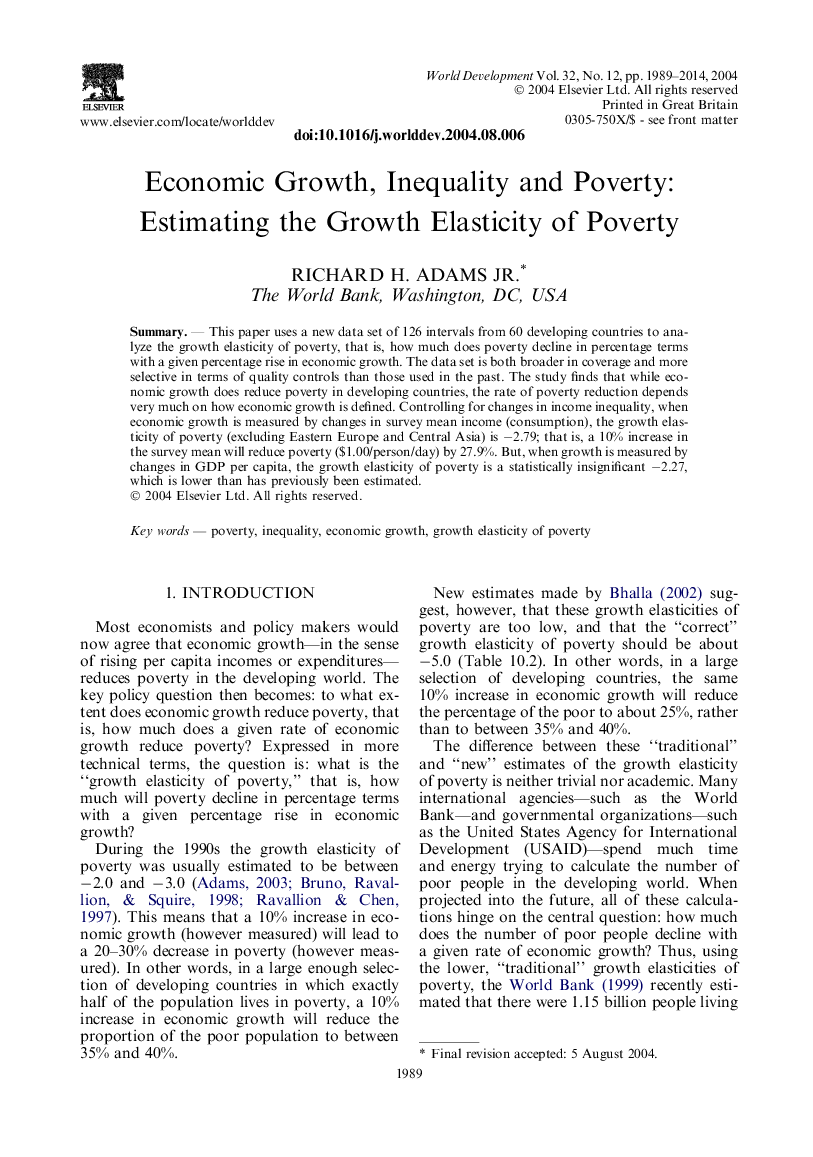| Article ID | Journal | Published Year | Pages | File Type |
|---|---|---|---|---|
| 991360 | World Development | 2014 | 26 Pages |
SummaryThis paper uses a new data set of 126 intervals from 60 developing countries to analyze the growth elasticity of poverty, that is, how much does poverty decline in percentage terms with a given percentage rise in economic growth. The data set is both broader in coverage and more selective in terms of quality controls than those used in the past. The study finds that while economic growth does reduce poverty in developing countries, the rate of poverty reduction depends very much on how economic growth is defined. Controlling for changes in income inequality, when economic growth is measured by changes in survey mean income (consumption), the growth elasticity of poverty (excluding Eastern Europe and Central Asia) is −2.79; that is, a 10% increase in the survey mean will reduce poverty ($1.00/person/day) by 27.9%. But, when growth is measured by changes in GDP per capita, the growth elasticity of poverty is a statistically insignificant −2.27, which is lower than has previously been estimated.
